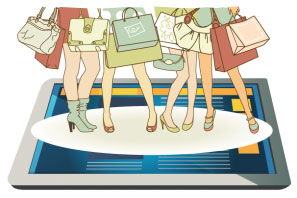I’m sitting in a Starbucks getting some work done between appointments. At the table across from me sits a 70ish woman. She’s reading a magazine and she has a Daytimer and pen on the table. From all appearances, she is a non-digital person, and that seems rational given her age.
But then she takes out her smart phone for a moment, and it’s not to make a call. I think, “Oh, she’s texting someone. Maybe I was wrong.” She puts the phone back down on the table (can you tell I’m more in observation mode than work mode?). A few minutes later the barista calls out a name, and the 70ish not-so-predictable woman gets up and retrieves the order that she clearly placed and paid for from her phone moments before.
It’s not just millennials who are comfortable with living in a digital world. People of every age and type have rapidly adjusted to the full range of opportunities available to them from their smartphones, tablets, and desktops. And the most significant factor in helping them become comfortable with the digital age has been companies like Starbucks leading the way with an increasingly digital customer experience.
People have learned to expect more from the places they shop and eat, because those have been the places that adopted an integrated digital-within-real-life experience. What does this mean for you if you sell goods to consumers? It means that they have higher expectations of you than they once did.
This is because the things that retailers have focused on first – more than coupons or discounts or kitchy promotions – have been customer service improvements.
Don’t want to wait in line at Panda Express? Order from your phone and pay before you leave the house, then pick it up either in the drive-through or at the counter. Not sure if you should buy that blender at Home Depot? Need more information on that vacuum cleaner than the box provides? Scan the QR code on the shelf and do your research. Price compare right from your phone while you’re still in the store. Just realized you have time to make that matinee of Kinky Boots? Order your tickets from the cab and have them waiting when you get there. Love the song you’re listening to in the coffee shop? Download it to your phone immediately. Or place an order for a new cup of coffee without the risk of losing your table.
What does this mean for retail? It means that customer expectations have taken another leap forward. Customers want to receive products faster. They want to self-serve information. They want the check-out experience at the register to be completely painless. They don’t want to wait in lines. They want to find things very specific to their interests, body types, and budgets – and they know those products are out there, even if they’re not available locally. Customers know enough not to have the same expectations of every type of seller; but still, they have greater expectations over all.
It has always been true that to be successful you had to find a way to establish a reason to buy from you rather than your competitors. Back when the nearest competitor was 25 miles away and the only transportation was a horse-drawn wagon, location alone provided competitive advantage. Today digital consumers shop the nooks and crannies of the globe – easily and cost-effectively – looking for the specific things they want. If the thing they want is a luxury rather than a necessity, they are more dedicated than ever to finding just the right thing. Oh - and it’s not just millennials. It’s everyone.
So the question is, what are you doing to create a reason to shop from you instead of from your competitors? What are you offering this brave new world of savvy digital consumers looking for solutions to very specific needs – from product needs to experience needs? If you’re not figuring this out, if you’re not exploring beyond the margins of what you thought your business was to find new answers, you may be running out of time to catch up.











